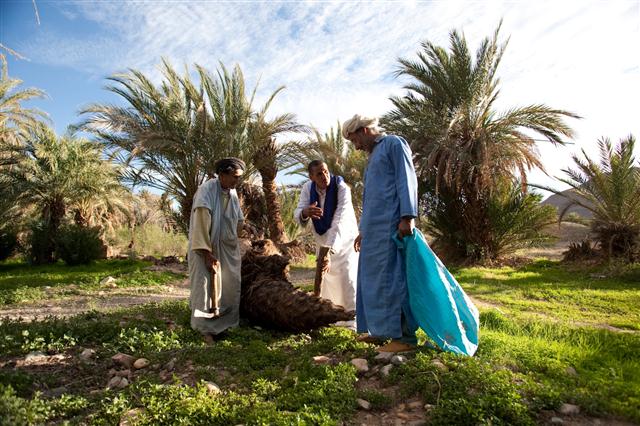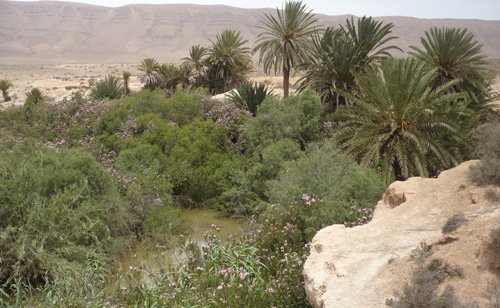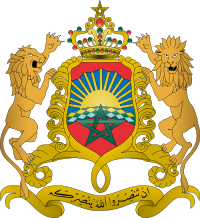Morocco's Second National Communication - April 2010
Project Overview
The creation of a National Communication offers countries the opportunity to contribute with technically sound studies and information that can be used for designing mitigation and adaptation measures, and project proposals that can and will help increase their resilience to the impacts of climate change. Activities generally include: V&A assessments, Greenhouse Gas Inventory preparation, Mitigation Analysis or Education, and awareness raising activities. The ultimate goal is the integration of climate change considerations into relevant social, economic and environmental policies and actions.
Consistent with global warming trends, observations from Morocco’s National Meteorological Directorate show rising temperatures, less precipitation, and an increase in drought, widening the gap between water supply and demand. Average temperatures are expected to rise between 2 and 5ºC by the end of this century, while rainfall is predicted to decline 20 to 30%.
Project Details
Consistent with global warming trends, observations from Morocco’s National Meteorological Directorate show rising temperatures, less precipitation, and an increase in drought, widening the gap between water supply and demand. Average temperatures are expected to rise between 2 and 5ºC by the end of this century, while rainfall is predicted to decline 20 to 30%.
Morocco’s rural northeast coast, including Nador and Berkane provinces, is increasingly vulnerable to the effects of climate change, including sea level rise, storm surges, and coastal flooding. Some areas of the north coast are already eroding at a rate of 1 metre per year and the average global sea level rise (SLR) predicted by the IPCC (up to 59 cm by 2100) will exacerbate erosion. Poverty limits the ability of local residents to cope with these changes. Average farm household incomes in some communities are as low as $540 per year. Remittances from overseas relatives keep many families out of poverty, but do little to create jobs.
Morocco is located in north‐east Africa, on the Atlantic and Mediterranean coast, at latitudes of 27 to 35°N. The Atlas mountain range runs through the centre of the country, forming a dividing line between the two main climatic zones, the Mediterranean northern coastal regions, and the southern, interior regions which lie on the edge of the hot Sahara desert.
Temperatures in the coastal regions range between 22‐25°C in the summer and 10‐12°C in the winter. Temperatures throughout the year are considerably lower than this range at the higher altitudes of the Atlas Mountains. The wet season lasts between November and March, affecting only the north of Morocco, with an average of 50 to 100mm per month.
Key Vulnerabilities:
- Agriculture/Food Security
- Coastal Zones and Marine Ecosystems
- Terrestrial Ecosystems
Sources:
- ALM's Climate Change Adaptation Profile: Moroccan Coastal Management: Building Capacity to Adapt to Climate Change through Sustainable Policies and Planning
- University of Oxford, School of Geography and the Environment. Accessed on 23 November 2009 at: http://country-profiles.geog.ox.ac.uk/.
Key Results and Outputs
- Sustainable development and the integration of climate change concerns into medium- and long-term planning
- Inventories of anthropogenic emissions by sources and removals by sinks of greenhouse gases
- Measures contributing to addressing climate change
- Research and systematic observation
- Climate change impacts, adaptation measures and response strategies
- Education, training and public awareness
Reports and Publications
Assessments and Background Documents
Morocco's Second National Communication - Official Document (French) - April 2010
Monitoring and Evaluation
In 1992, countries joined an international treaty, the United Nations Framework Convention on Climate Change, to cooperatively consider what they could do to limit average global temperature increases and the resulting climate change, and to cope with whatever impacts were, by then, inevitable.
Parties to the Convention must submit national reports on implementation of the Convention to the Conference of the Parties (COP). The required contents of national communications and the timetable for their submission are different for Annex I and non-Annex I Parties. This is in accordance with the principle of "common but differentiated responsibilities" enshrined in the Convention.
The core elements of the national communications for both Annex I and non-Annex I Parties are information on emissions and removals of greenhouse gases (GHGs) and details of the activities a Party has undertaken to implement the Convention. National communications usually contain information on national circumstances, vulnerability assessment, financial resources and transfer of technology, and education, training and public awareness.
Since 1994, governments have invested significant time and resources in the preparation, collection and validation of data on GHG emissions, and the COP has made determined efforts to improve the quality and consistency of the data, which are ensured by established guidelines for reporting. Non-Annex I Parties receive financial and technical assistance in preparing their national communications, facilitated by the UNFCCC secretariat.




